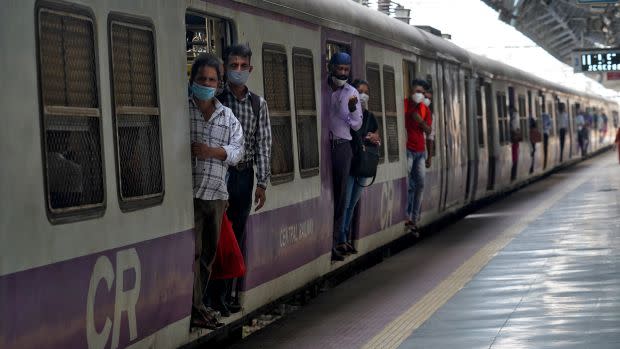Is India currently witnessing a second wave of the Covid-19 pandemic?

A spike in the number of new Covid-19 infections threatens to overturn the progress India has made in containing the pandemic.
On Feb. 21, the country recorded over 14,000 new infections of the novel coronavirus. As of Feb. 22, the total reported cases of Covid-19 in India were over 11 million.
With the daily new infections—which had come down to close to 10,000 a day—slowly rising in the past week, several states are now considering localised lockdowns, especially in those regions that are seeing a sudden spike. Five states, according to data from India’s health ministry, account for 86% of the new infections in the country.
Maharashtra, the western state that is home to India’s financial capital Mumbai, is leading these numbers. The state government has introduced a night curfew in some districts and towns like Pune, and a week-long full lockdown in the region of Amravati. The municipal body of Maharashtra has estimated a 36% spike in the number of daily new cases in Mumbai alone between Feb. 8 and Feb. 21.
At the moment, though, legislators have said that it is premature to label this surge a “second wave” of the pandemic in the state. But epidemiologists worry that viral mutations may be at play.
I have a gut feeling that ongoing outbreaks in #Maharashtra and #Kerala are at least in part due to new variants of the #SARS_CoV_2 . It’s strange not to see the results mapped to clustering of the cases in these two states. @ICMRDELHI
— Dr Giridhara R Babu (@epigiri) February 17, 2021
The possibility of Covid-19 viral mutations, either those originating from the UK, South Africa, Brazil, or even India cannot be completely ruled out. But evidence that these have or can wreak havoc on India’s grip over the pandemic are scant at the moment.
For instance, India’s overall active caseload is around 150,000 as of Feb. 22, which is 1.36% of the total confirmed positive cases in the country. Epidemiologists also contend that the new variants have not shown any major impact on the number of deaths, and the total fatalities stand at 156,385 at the moment. But till a detailed and consistent sequencing of these mutations is undertaken, these hypotheses are inconclusive.
A possible cause for the number of cases on the rise could be the lack of localised herd immunity.
Herd immunity, but only in pockets
Through the months of the Covid-19 surge in August and September, India’s large metropolitan cities saw catastrophic surges in the number of positive cases. Epidemiologist Jayaprakash Muliyil explains that this was a natural trajectory of a pandemic, with the cases steadily coming down in these cities.
A part of the reason is the localised herd immunity in such cities, where serological surveys have shown upwards of 50% of the population with Covid-19 antibodies. Scientists suggest that these surveys often underestimate the actual sero-prevalence, which could take the figure closer to the 70% needed for herd immunity in a region.
But a caveat exists in this study. The Indian Council of Medical Research, the country’s top medical research body, has found that the sero-prevalence for the entire country is at about 20%. This points to a large semi-urban and rural population that has yet been shielded from the virus.
Covid-19 fatigue, which may be leading people to let their guards and masks down, is likely another cause behind the current surge, Maharashtra chief minister Uddhav Thackeray said in a video address. “The new slogan ‘I am responsible’ conveys that people must be responsible for themselves. People must make sure that they are wearing a mask, keeping social distancing and washing their hands,” he said.
Sign up for the Quartz Daily Brief, our free daily newsletter with the world’s most important and interesting news.
More stories from Quartz:
The app behind virtual Burning Man wants to host your next office function
Psychology suggests that when someone calls you the wrong name, it’s because they love you
